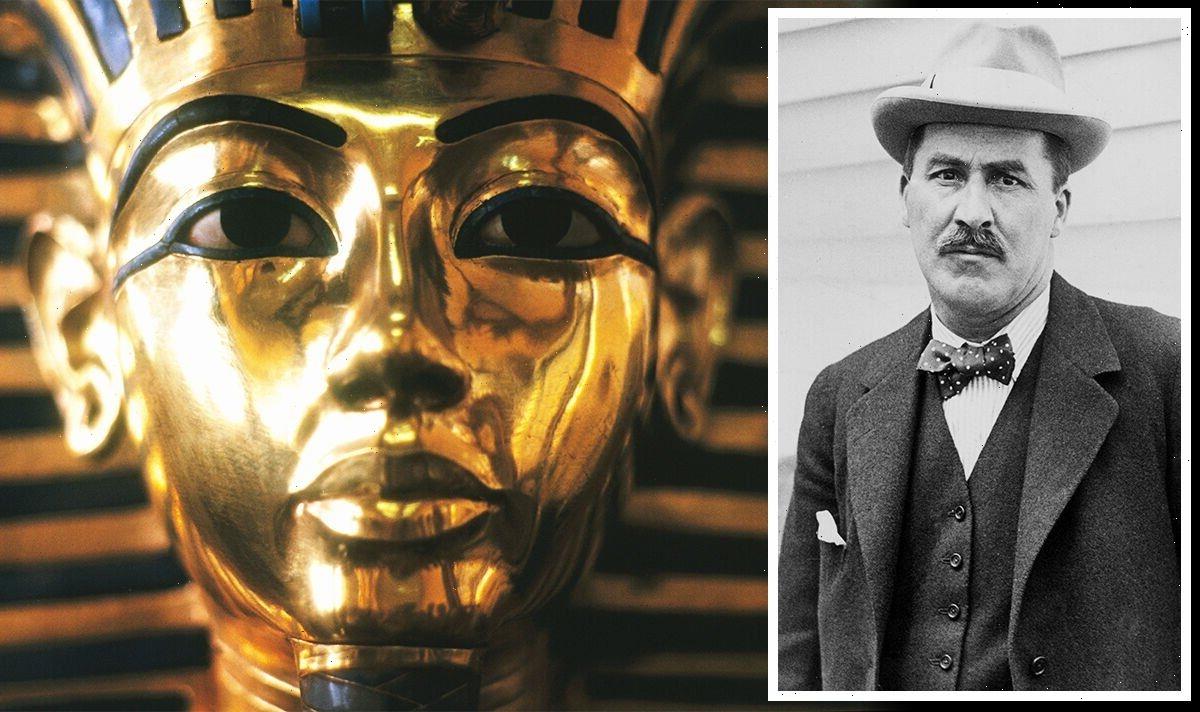Tutankhamun: Expert discusses archaeologist Howard Carter
We use your sign-up to provide content in ways you’ve consented to and to improve our understanding of you. This may include adverts from us and 3rd parties based on our understanding. You can unsubscribe at any time. More info
“As my eyes grew accustomed to the light, details of the room within emerged slowly from the mist, strange animals, statues, and gold – everywhere the glint of gold,” Howard Carter said on recalling his discovery of the lost Pharaoh Tutankhamun’s tomb.
“For the moment — an eternity it must have seemed to the others standing by — I was struck dumb with amazement, and when Lord Carnarvon, unable to stand the suspense any longer, inquired anxiously, ‘Can you see anything?’ it was all I could do to get out the words, ‘Yes, wonderful things.”
November 4 marks 100 years since Carter’s team of local workers uncovered the first step of an entrance to a tomb that had been overlooked in the Valley of the Kings, cementing his place in archaeological history.
The team fell silent when Carter arrived at the site — a sign that they had found something like never before.
Soon, the workers removed the earth and the dust and revealed a doorway which led into Tutankhamun’s tomb.
It almost didn’t go to plan, however. Carter struggled to win over his financial backer after World War 1, a period in which the economy had been smashed to pieces and even the wealthy felt it bite.
Having been relegated from the world of Egyptian archaeology in 1905 over an altercation with some Egyptian workers and tourists — Carter took the side of the Egyptians — he had a chance meeting with Lord Carnarvon at Highclere Castle, and began work for him in 1907 as a supervisor to the excavation of tombs in Deir el-Bahri, near Thebes, present-day Luxor — a pet project of Carnarvon’s.


For the next 15 years the two forged an unlikely friendship, the former relying on the latter’s financial privilege to scratch the burning archaeological itch that had plagued him ever since his first visit to Egypt in the early 1890s.
But while he had returned to doing what he loved, he had an inkling that there was another, as yet undiscovered great pharaoh laying somewhere in the Valley of the Kings.
You could get a permit to dig there but they were limited in number. That was until 1917, when Carnarvon received a golden ticket and permission to dig in the valley.
When he arrived he found a valley covered in rubble and almost entirely dug up, somewhere that the wealthy American Theodore Davis, who had dug in the valley for 11 years, had declared empty, with that comment giving up.
JUST IN: Archaeology breakthrough as WW2-era bomber found off Denmark coast

“Everyone thought that all the royal tombs that were going to be discovered had been discovered,” said Janina Ramirez during the BBC’s, ‘Raiders of the Lost Past’.
It may have been true. Carter and his team found little in the valley, and what they did find in the following five years had little to do with the fabled Tutankhamun.
All of this led to a fateful meeting in June 1922, when Carter received a summons from Carnarvon.
High taxation to account for the losses in World War I had placed stately homes in an awkward position, and Carnarvon was feeling the squeeze.
George Reginald Oliver Molyneux Herbert, the 8th Earl of Carnarvon, Carnarvon’s great-grandson, said Carnarvon was worried, telling Ramirez: “I think great-grandfather was getting to the stage it was all becoming quite an expensive thing.
DON’T MISS
Egypt breakthrough as Nefertiti may be hiding in King Tut’s tomb [REPORT]
Half of UK bread products contain multiple pesticides, analysis shows [INSIGHT]
Defence system could ‘change Ukraine war’ and devastate Russia [ANALYSIS]


“I think he probably said to Howard Carter, ‘Look, my friend, we’ve had a great time out there, but maybe we should be drawing stumps because this is costing more and more and we haven’t made any great breakthrough.'”
Carter pleaded with Carnarvon, asking him to sponsor the dig for just one more season, and Carnarvon caved in.
It would soon prove to be the right decision, as barely four months later, Carter’s team stumbled upon that breakthrough that had eluded them for 15 years.
He focused on one spot, the tomb of Ramesses VI, who was pharaoh around two centuries after Tutankhamun.

At the very bottom of his tomb led a pile of rubble that had never been excavated thoroughly, a pile that Carter’s workers worked through and eventually cleared, finding beneath it a series of huts of the workers who had previously dug up Ramesses’ tomb.
Carter ordered that his team dig through the rubble and further into the earth, in the hope that the former workers had missed a trick.
On November 4, writing in his diary, Carter summed up that day’s work in five simple words: “First steps of tomb found.”
It wasn’t until November 24 that the full extent of the stairway had been revealed by the local workers, at the bottom of which lay a sealed door.


Carter arrived at the scene and the door was shortly removed. And so the tomb of Tutankhamun was found.
Inside, more than 5,000 items relating to the Boy King and the dynasty from which he came were strewn around the room.
Gilded couches, chests, thrones, and shrines were piled on top of each other, and there were also two further chambers inside the tomb, including a doorway sealed shut that led to the inner burial chamber, guarded by two life-like statues of Tutankhamun.
On November 29, the tomb was officially opened to a number of individuals and the Egyptian authorities, and the rest is history.
Source: Read Full Article
